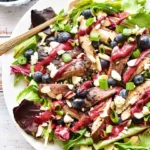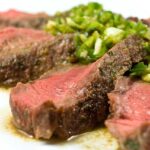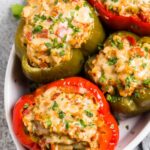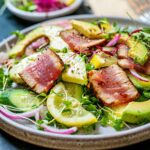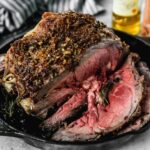If you are looking to elevate your cooking skills, learning to use the sous vide method could be a game-changer for your kitchen. This cooking technique involves sealing food in a bag and cooking it in water at a precise temperature, which ensures perfect and consistent results every time. You’ll find that sous vide can enhance the flavor and texture of your favorite dishes, from delicate fish to hearty steaks.
Not only is sous vide popular among professional chefs, but it’s also a fantastic method for home cooks who want to achieve restaurant-quality meals. With our collection of 26 sous vide recipes, you will discover how versatile and straightforward this cooking technique can be. Whether you are a sous vide novice or an experienced user, these recipes will help you create mouth-watering dishes with ease and confidence.
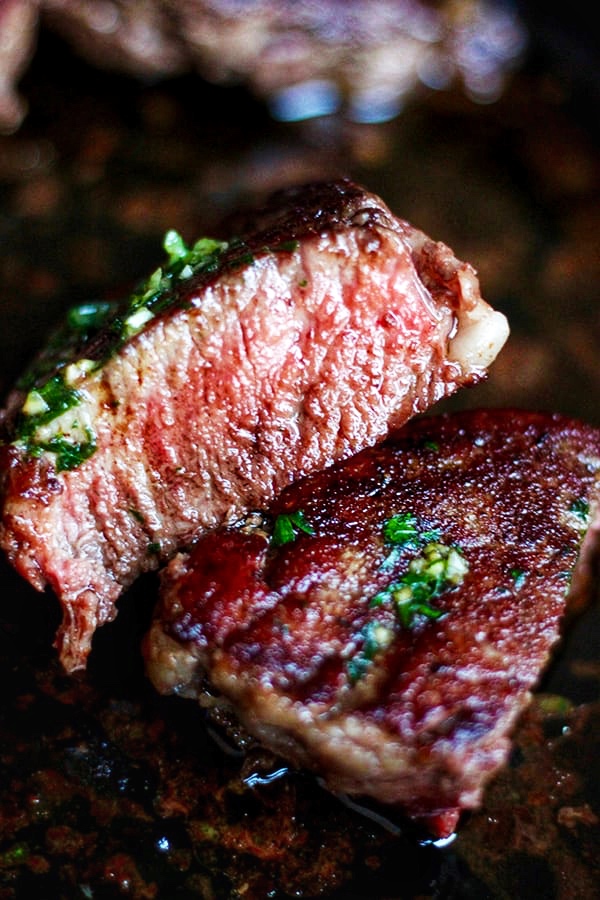
1) Sous Vide Steak with Garlic Butter
Start by preparing your steaks. Season them generously with salt and pepper. Place each steak in a vacuum-sealed bag or a ziplock bag suitable for sous vide cooking. Add a sprig of fresh thyme and a clove of crushed garlic to each bag.
Set your sous vide water bath to 130°F (54°C) for medium-rare doneness. Place the sealed steaks into the water bath and cook for 1 hour. This ensures the steak is evenly cooked throughout.
While the steaks cook, mix softened butter with minced garlic, a pinch of salt, and chopped fresh parsley. This will be your garlic butter compound.
After an hour, remove the steaks from the water bath and bags. Pat them dry with paper towels. Heat a cast iron skillet over high heat and add a small amount of oil. Once the oil is hot and shimmering, sear each steak for 30 seconds to 1 minute per side.
Immediately after searing, top each steak with a dollop of your garlic butter compound. Let the steaks rest for a few minutes so the juices redistribute. Serve your sous vide steak with garlic butter hot, ensuring each bite is flavorful and tender.
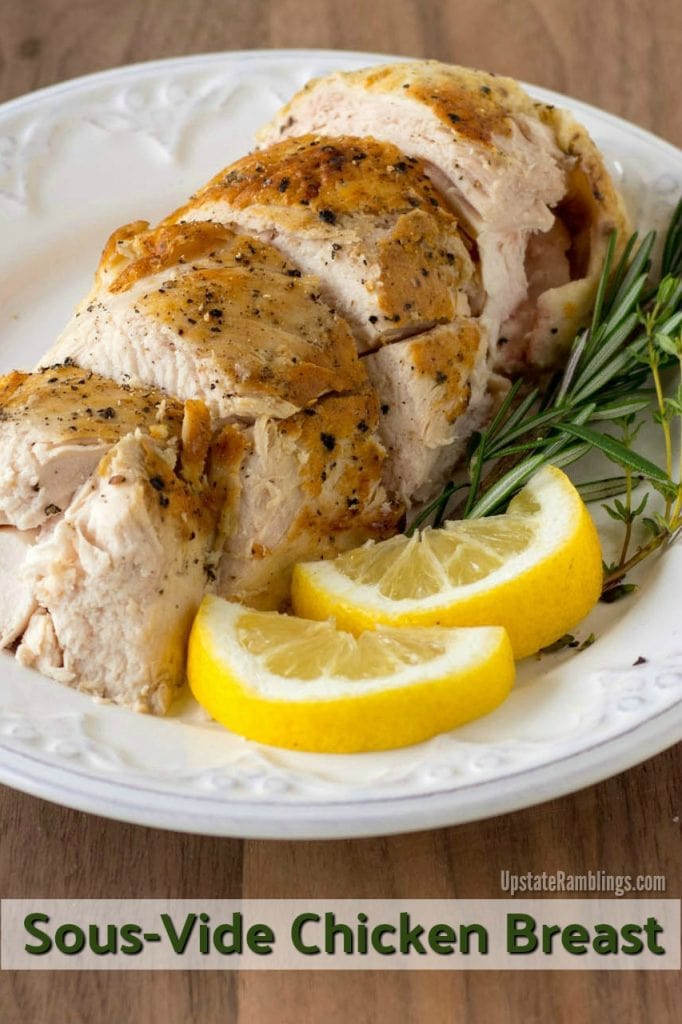
2) Sous Vide Chicken Breast with Lemon Herb
Sous vide chicken breast with lemon herb is a simple yet flavorful dish. Start by setting your sous vide cooker to 145°F.
Season the chicken breasts with salt and pepper. Add slices of lemon, garlic, and sprigs of thyme and rosemary. Place the chicken into vacuum-sealed bags or food storage bags.
Once the water bath reaches the right temperature, submerge the bags in the water. Cook for about 1.5 to 2 hours.
When time is up, take the chicken out of the bags and pat it dry with paper towels.
Heat a skillet with some olive oil over medium-high heat. Sear the chicken breasts until they are nicely browned, about 1-2 minutes per side.
Pair your chicken with a light salad or steamed vegetables for a complete meal.
The sous vide method ensures the chicken stays juicy and retains the bright flavors of the lemon and herbs. Enjoy your perfectly cooked chicken breast!
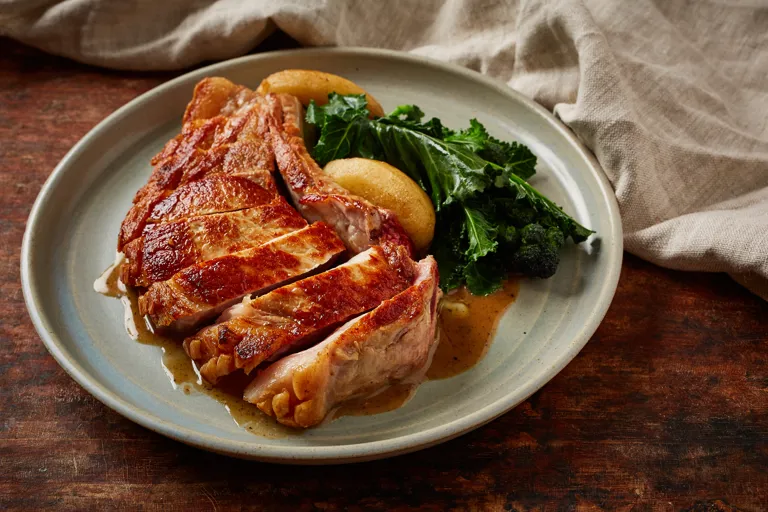
3) Sous Vide Pork Chops with Apple Cider
Sous vide pork chops with apple cider offer a rich and savory dish that’s perfect for any occasion.
First, prepare your pork chops by seasoning them with salt and pepper or your favorite seasoning mix. Place them in vacuum-sealed bags with a splash of apple cider for added flavor.
Set your sous vide machine to 140°F (60°C) and cook the pork chops for 1.5 to 2 hours. This ensures the pork is tender and juicy.
Once cooked, remove the pork chops from the bags and pat them dry with paper towels. Heat a large skillet on high and add some oil. Sear the pork chops for 1 to 2 minutes on each side to develop a nice crust.
While the pork chops rest, you can make a simple apple cider glaze. In the same skillet, add some garlic, apple cider, cider vinegar, and a bit of mustard. Let it reduce until it becomes thick and syrupy.
Serve your pork chops with the apple cider glaze drizzled over them. This dish pairs well with roasted vegetables or mashed potatoes.
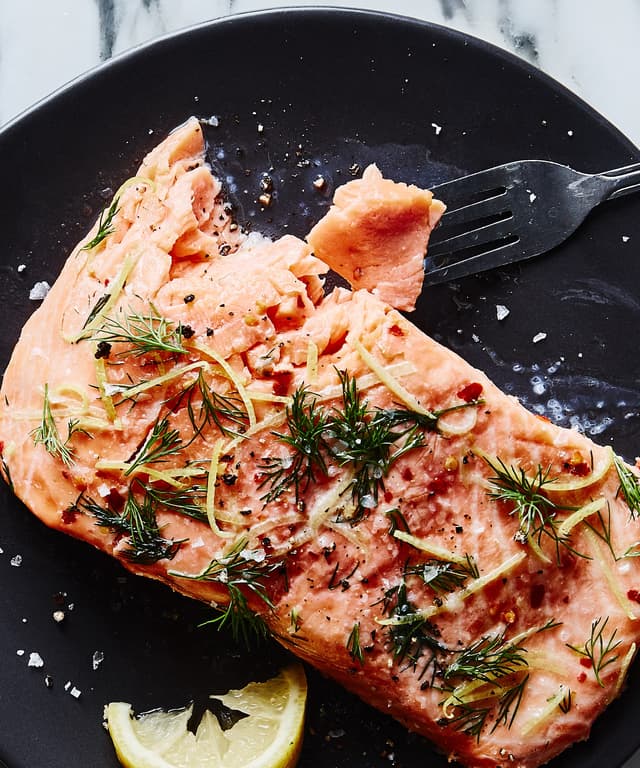
4) Sous Vide Salmon with Dill and Lemon
Set your sous vide machine to 128°F (53.5°C).
Season the salmon fillets with garlic powder, salt, and pepper. In a freezer bag, place the salmon along with some fresh dill sprigs and a splash of lemon juice.
Use a vacuum sealer or the water displacement method to remove the air from the bag. Submerge the bag in the water bath. Cook the salmon for 45 minutes.
Once done, preheat a nonstick skillet over medium-high heat. Add a bit of olive oil and sear the salmon skin-side down until it becomes crispy, which should take about a minute.
Prepare a lemon dill sauce by mixing creme fraiche, lemon zest, lemon juice, and finely chopped dill. Serve this sauce alongside the salmon for a fresh and tangy complement.
Be sure to keep the salmon chilled until you’re ready to cook. Enjoy this dish with perhaps a side of cucumber salad for a refreshing meal.
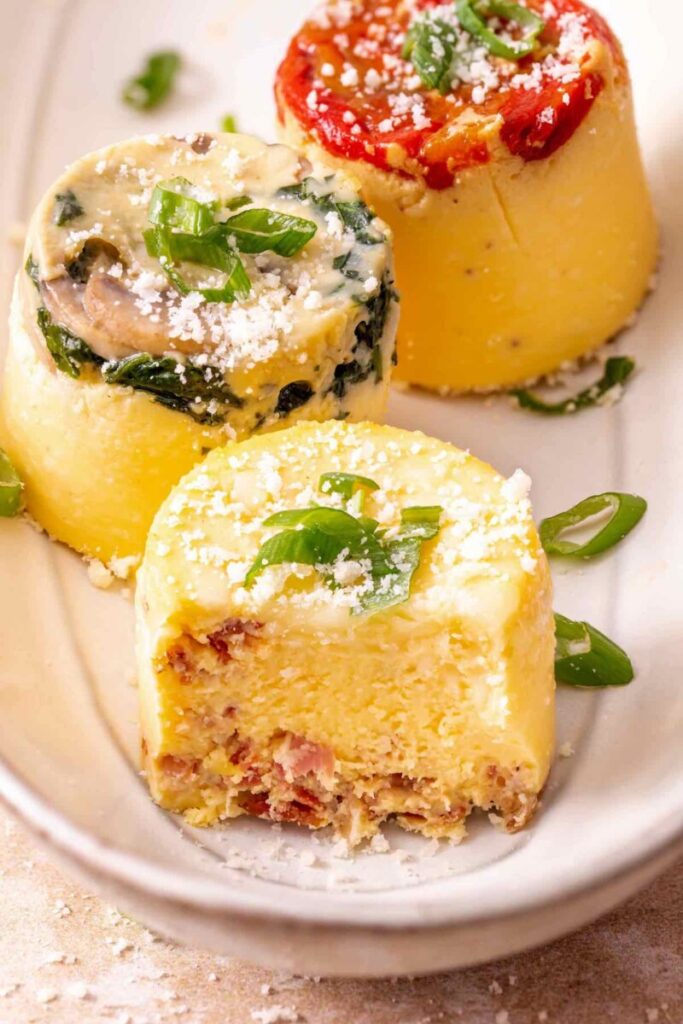
5) Sous Vide Egg Bites
Sous vide egg bites are a great addition to your breakfast options. First, blend eggs, cream cheese, and gruyere cheese until smooth. Add salt and pepper for seasoning.
Prepare your sous vide setup by heating water to 170 degrees F. Use a large pot and a sous vide immersion cooker. Grease small mason jars with cooking spray.
Pour the egg mixture into the mason jars. Leave about 1/2 inch at the top to prevent overflow in the water bath. You can also add cooked bacon, mushrooms, or spinach to the jars for extra flavor.
Once your jars are ready, place them in the water bath. Cook for about one hour. The gentle temperature control of sous vide ensures the egg bites are perfectly creamy and cooked through.
After cooking, let the jars cool slightly before opening. Serve the egg bites warm. They can be stored in the fridge and reheated for a quick and easy breakfast during the week.
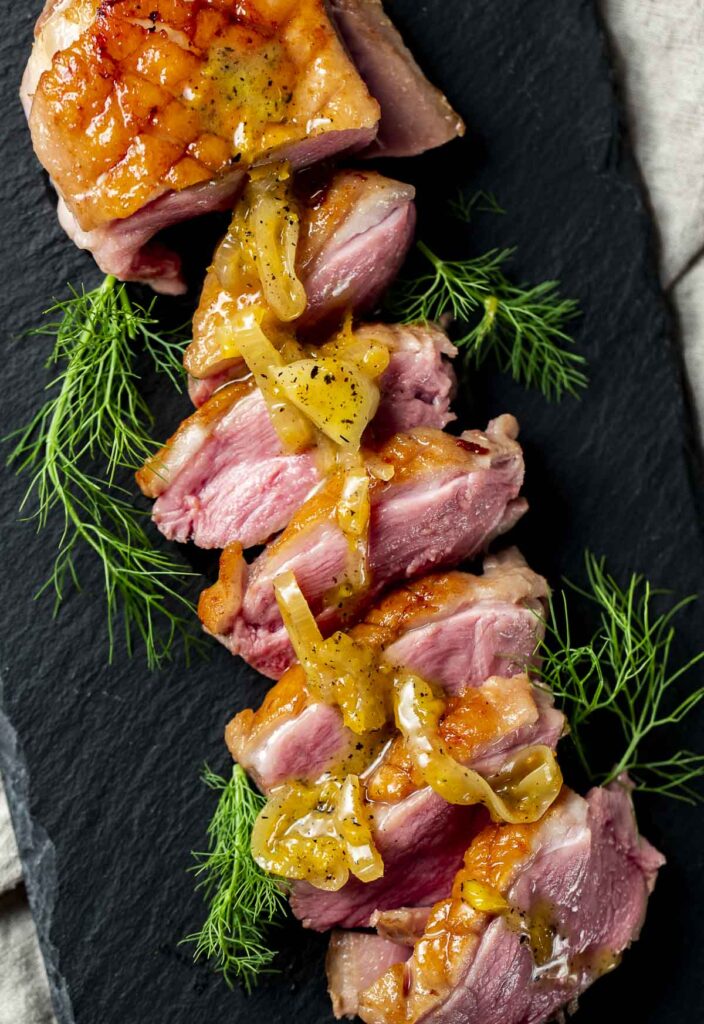
6) Sous Vide Duck Breast with Orange Glaze
Start by seasoning duck breasts with kosher salt and black pepper. Seal them in a sous vide bag.
Heat your water bath to 135°F (57°C). Place the bag in the bath and cook for 3.5 hours.
While the duck cooks, prepare the orange glaze. Melt butter over medium heat, then add shallots and fennel. Cook until softened and fragrant.
Add white wine and simmer for 8-10 minutes. Next, add a bit of vinegar and let it simmer for another 2-3 minutes.
Once the duck is done, remove it from the bag and pat dry. Score the skin and heat a skillet over medium-high heat.
Sear the duck, skin side down, until deeply browned, about 5 minutes. Let the duck rest before serving.
Drizzle the orange glaze over the duck breast for a perfect finish. Serve immediately for the best experience.
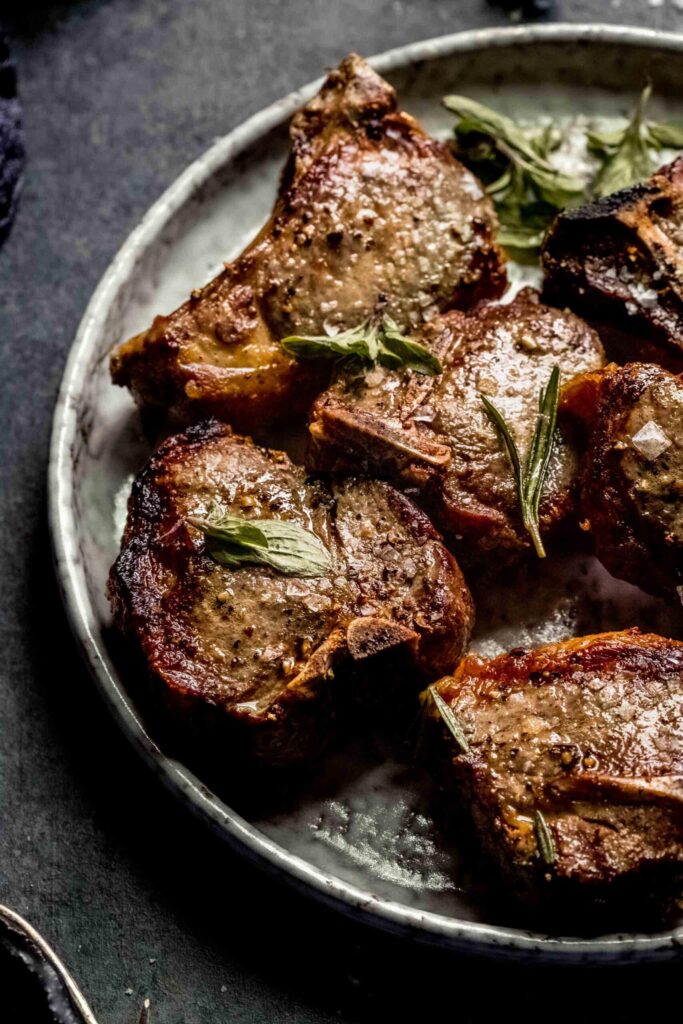
7) Sous Vide Lamb Chops with Rosemary
To make delicious Sous Vide lamb chops with rosemary, start by seasoning the lamb chops. Sprinkle both sides with salt, pepper, and minced garlic. You can add lemon peel for extra flavor.
Next, place the seasoned lamb chops in a vacuum-sealed bag. Add a few sprigs of fresh rosemary to the bag. Remove the air from the bag using a vacuum sealer.
Set your sous vide machine to 135ºF (57ºC) if you prefer medium doneness. Place the sealed bag in the water bath and cook for about 2 hours.
After cooking, remove the bag from the water and take out the lamb chops. Pat them dry with paper towels.
Heat a cast iron skillet over high heat and add some oil. Sear the lamb chops in the hot skillet for about 1 minute on each side. This will give them a nice, crisp outer layer.
These steps help ensure your lamb chops are tender and full of flavor. The rosemary infuses the meat, making it fragrant and tasty. Enjoy your perfectly cooked Sous Vide lamb chops!
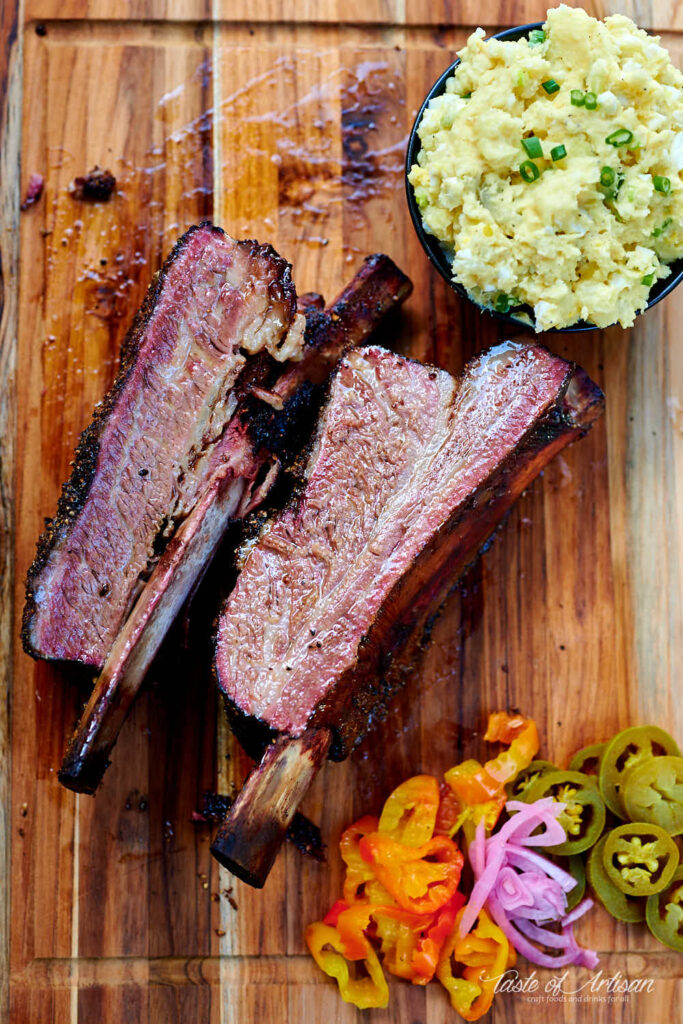
8) Sous Vide Beef Short Ribs
Sous vide beef short ribs are tender and full of flavor.
First, season the short ribs with salt and pepper. You can also add a rub or splash of soy sauce for extra taste.
Next, vacuum seal the seasoned ribs in a bag. If you don’t have a vacuum sealer, a Ziploc bag works too.
Preheat your sous vide machine to 135°F if you want medium-rare, or 180°F for a more well-done texture. The cooking time can range from 24 to 48 hours.
After cooking, remove the ribs from the bag and pat them dry with paper towels.
Searing the ribs is the next step. Heat up a skillet with some olive oil on medium-high heat. Sear each side of the short ribs until browned.
You can also make a sauce from the juices left in the bag. Strain the juice into a saucepan, add some wine and beef stock, and reduce it by half for a rich sauce.
Serve your sous vide beef short ribs with your favorite sides, like mashed potatoes or veggies. Enjoy the perfectly cooked, tender meat.
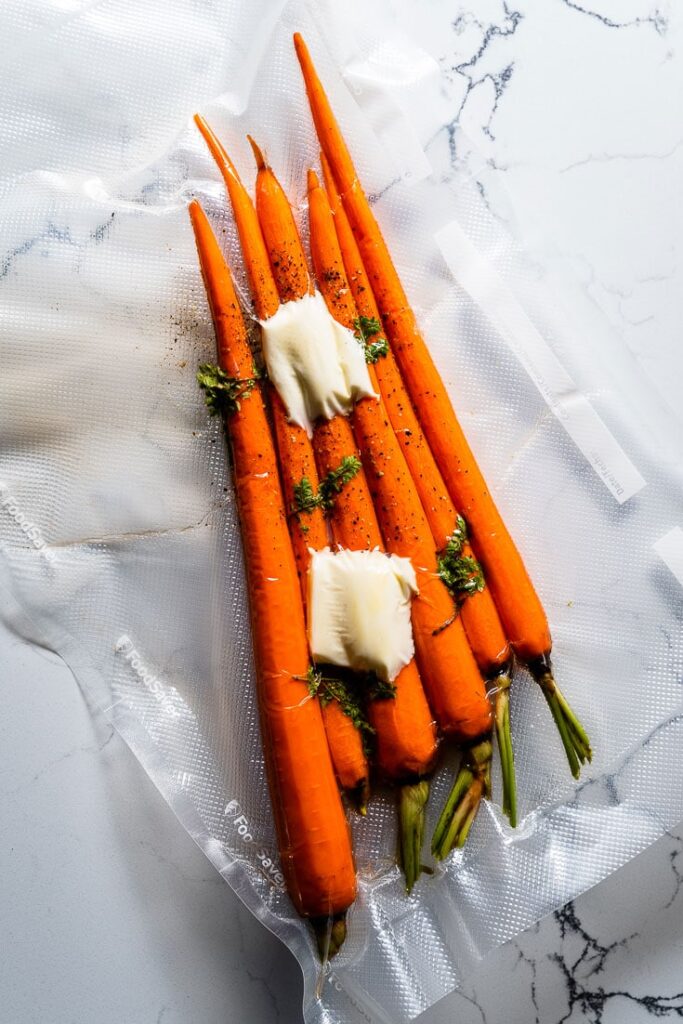
9) Sous Vide Carrots with Thyme
To make Sous Vide Carrots with Thyme, start by preheating your water bath to 183°F (84°C).
Peel and trim your carrots. Place them in a vacuum-seal bag with butter, a pinch of salt, a bit of brown sugar, and fresh thyme sprigs. Seal the bag according to your vacuum sealer’s instructions.
Once the water bath reaches the right temperature, put the sealed bag into the bath. Cook the carrots for about one hour until they are tender.
After cooking, you can either serve the carrots directly or add an extra step for more flavor. Heat a skillet over medium-high heat and add the cooked carrots along with the juices. Let the carrots caramelize slightly.
Serve the carrots warm, making sure to garnish them with additional fresh thyme if desired. This dish pairs excellently with roasted meats or as a side for a hearty meal.
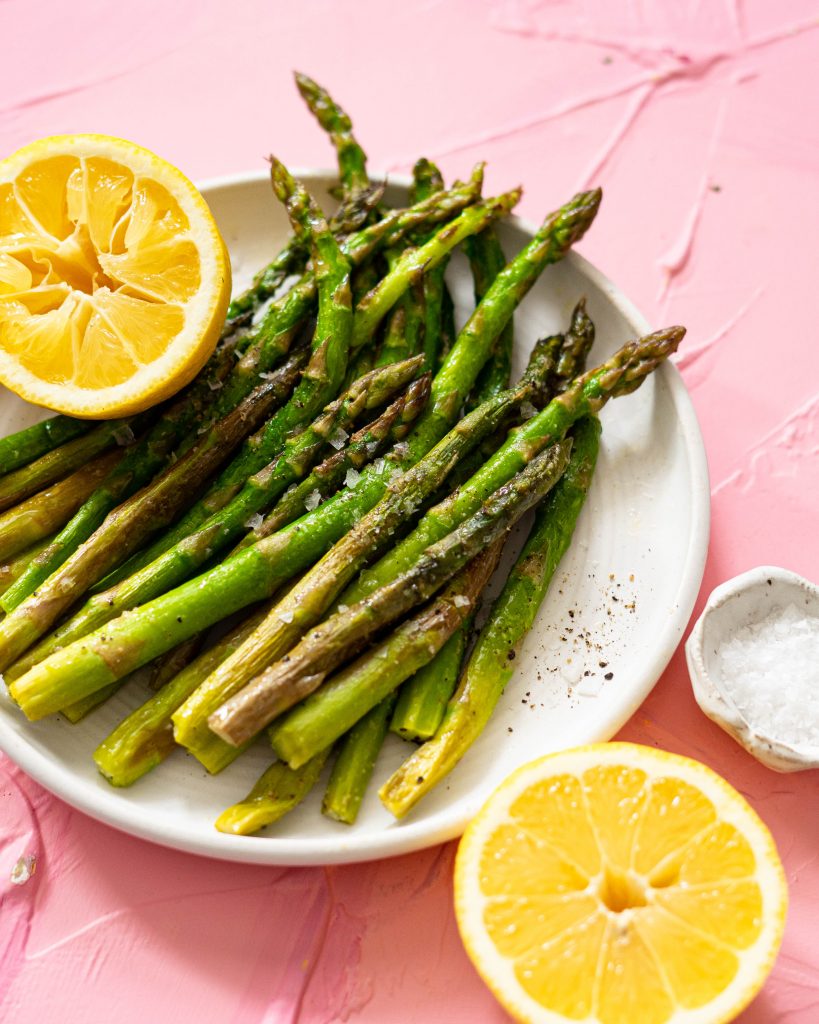
10) Sous Vide Asparagus with Parmesan
Start by setting your sous vide precision cooker to 180°F (82°C). Meanwhile, wash and trim the tough, woody ends of the asparagus. Make sure the spears are clean and dry.
Place the asparagus in a zip-lock bag. Add a few cubes of butter, a tablespoon of minced garlic, and some salt. Seal the bag using either a vacuum sealer or the water displacement method.
Once your water reaches the right temperature, submerge the bag in the container. Cook the asparagus for 8-12 minutes. Cooking time may vary slightly depending on the thickness of the spears.
After cooking, remove the asparagus from the bag. Sprinkle generously with grated Parmesan cheese. The melted butter and garlic will coat the asparagus beautifully.
Serve this dish as a side to your favorite main course. It’s simple yet flavorful, thanks to the sous vide method which ensures even cooking and a tender texture.
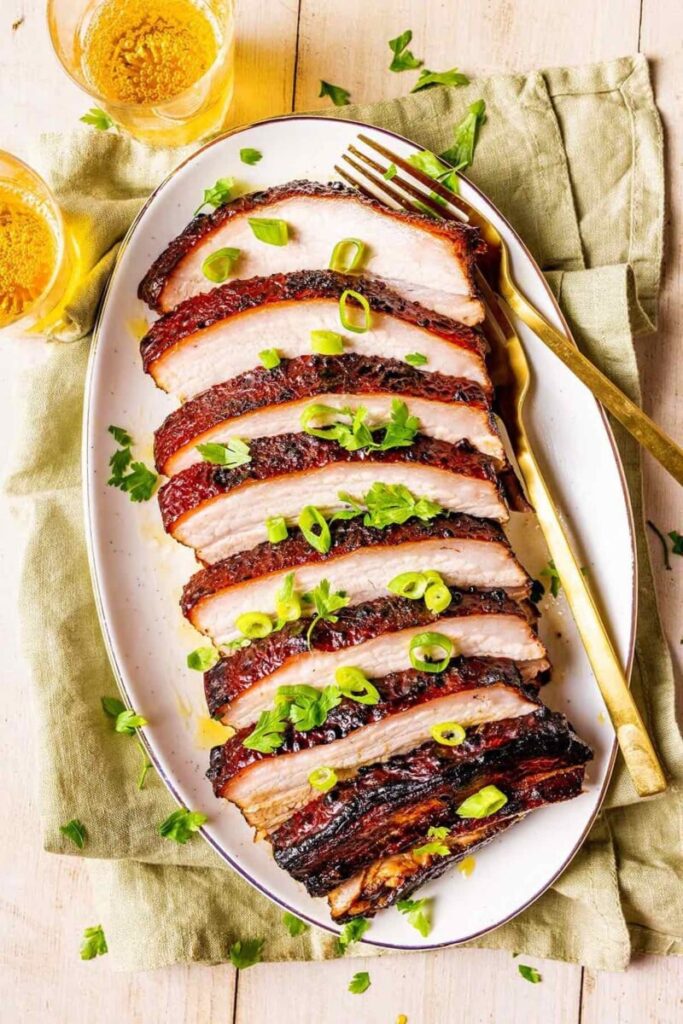
11) Sous Vide Pork Belly with Soy Glaze
Sous vide pork belly with soy glaze is a delicious and flavorful dish. Start by setting your precision cooker to 77°C (170°F) and prepare a water bath.
Mix soy sauce, mirin, and other spices for your marinade. Place the pork belly and marinade in a vacuum-sealed bag. Ensure the meat is fully submerged in the water bath. Cook for 10 hours.
Once cooked, remove the pork belly from the bag and pat it dry. To finish, heat a skillet on high heat. Sear the pork belly fat side down for 2 to 3 minutes until crispy. Flip and sear each side for one minute.
After searing, brush the pork belly with the remaining marinade. Let it rest for a few minutes before slicing. Serve warm and enjoy the tender, juicy flavor.
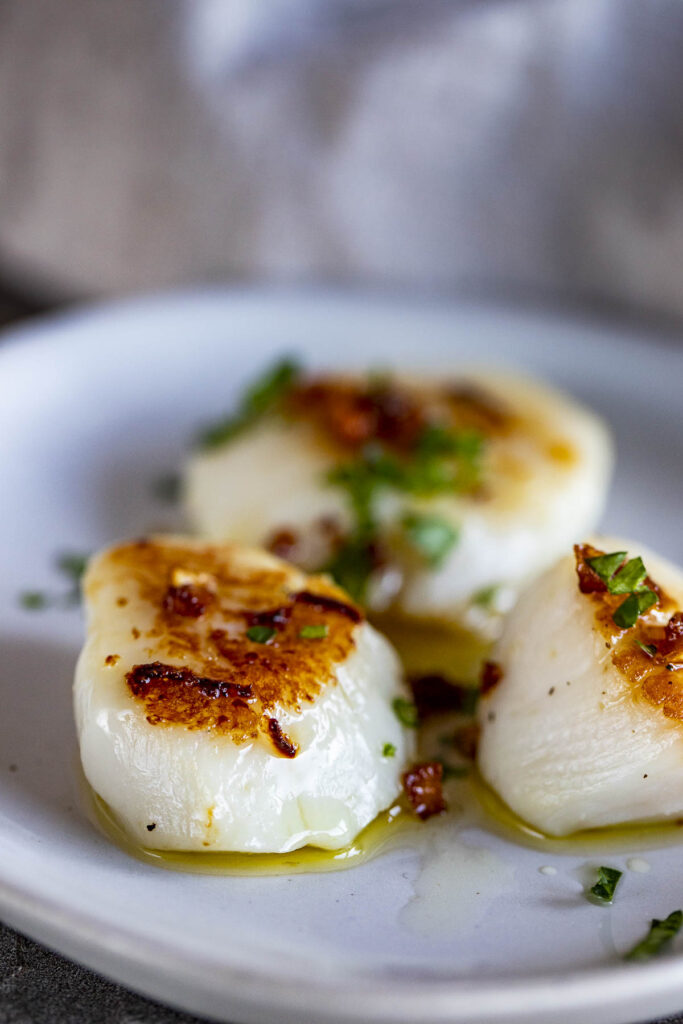
12) Sous Vide Scallops with Garlic
Start by prepping your sous vide machine. Fill a medium pot with warm water and set the temperature to 123°F (51°C).
Pat the scallops dry with paper towels. Season them lightly with salt and pepper.
Place the seasoned scallops in a resealable plastic bag. Add a clove of minced garlic and a tablespoon of butter to the bag.
Seal the bag using the water immersion method to remove all air.
Put the sealed bag into the preheated water bath. Let the scallops cook for about 30 minutes.
After cooking, remove the bag from the water bath. Pat the scallops dry again.
Heat a skillet over medium-high heat. Add a little oil to the pan.
Sear the scallops for 1-2 minutes on each side until they are nicely browned.
Serve the scallops with a squeeze of fresh lemon juice and enjoy.
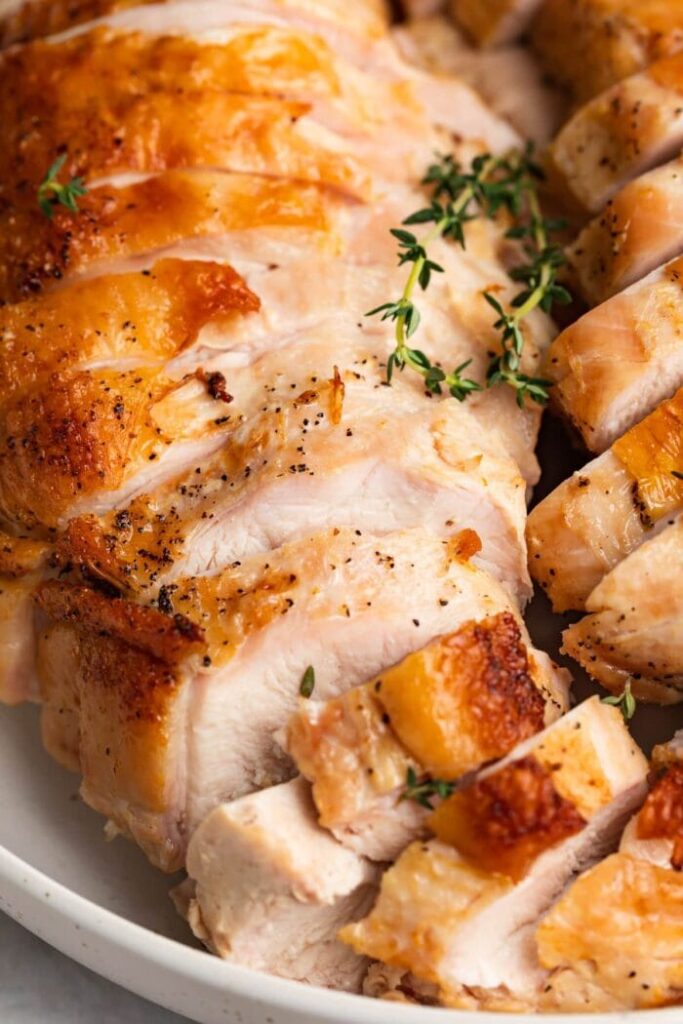
13) Sous Vide Turkey Breast with Sage
First, preheat your sous vide water bath to 145°F. This temperature ensures a juicy, tender turkey breast.
Mix a brine solution by dissolving salt in water. Submerge the turkey breast in the brine and refrigerate for 6-8 hours. This step infuses the meat with flavor and keeps it moist.
Next, prepare a Sage Spice Rub. Combine sage, salt, pepper, and any other favorite spices.
Remove the turkey breast from the brine and pat it dry with paper towels. Spread the Sage Spice Rub evenly over the turkey breast.
Place the seasoned turkey breast in a vacuum-seal bag. Add slices of lemon and a bit of butter for extra flavor. Vacuum seal the bag.
Cook the turkey breast in the sous vide bath for 2 to 4 hours. This slow cooking process makes the meat incredibly tender.
After sous viding, preheat your oven to 450°F. Take the turkey breast out of the bag and place it on a baking rack. Roast it for 10 to 15 minutes to get a crispy, golden brown skin.
Let the turkey breast rest for a few minutes before slicing. This step allows the juices to redistribute, resulting in a flavorful and moist turkey breast. Enjoy your Sous Vide Turkey Breast with Sage!
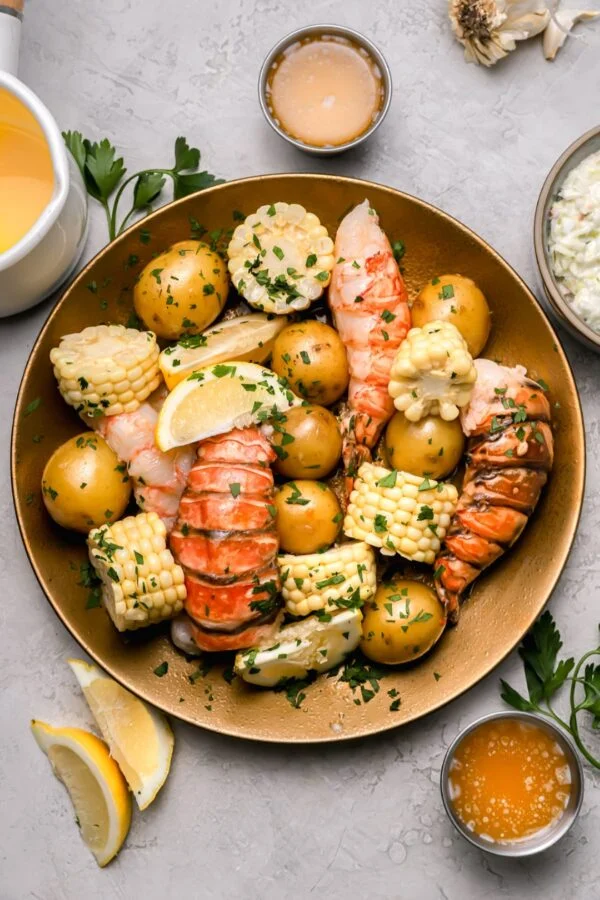
14) Sous Vide Lobster Tail with Butter
Start by preheating your water bath to 135°F. This temperature will give you tender and juicy lobster tails.
Next, defrost your frozen lobster tails. Place them in a bowl of cold water for about 30 minutes. This will help loosen up the meat.
Cut the shell down the middle using kitchen shears. Be careful not to rip the meat.
Place the lobster tails in a vacuum seal bag or a zipper lock bag. Add butter and a pinch of salt.
Seal the bag using a vacuum sealer or the water immersion technique. Make sure you remove as much air as possible.
Submerge the bag in the preheated water bath. Clip the bag to the side of the container to keep the zipper above the water if needed.
Cook for 45 minutes.
While the lobster is cooking, you can prepare a garlic butter sauce. Melt 4 tablespoons of butter in a small saucepan. Add minced garlic and cook until fragrant.
When the timer goes off, remove the bag from the water bath.
Serve the lobster tails with the melted butter or garlic butter sauce. Enjoy your delicious sous vide lobster tails!
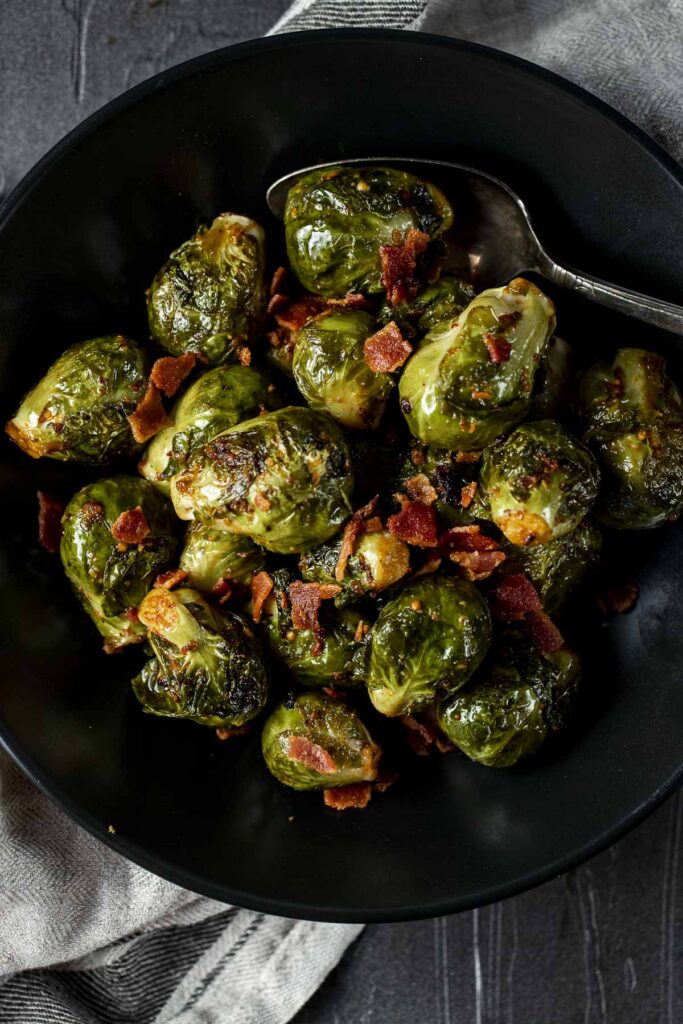
15) Sous Vide Brussels Sprouts with Bacon
Sous vide Brussels sprouts with bacon deliver tender, flavorful results every time. You’ll start by heating your sous vide bath to 183°F.
Wash and pat dry one pound of Brussels sprouts. Trim and halve them. Cook some bacon in a frying pan until crispy. Reserve the bacon fat.
Mix the Brussels sprouts with minced garlic, salt, and pepper. Pour the bacon fat over the sprouts and mix well. Place everything in a vacuum-sealed bag, making sure the sprouts are in a single layer.
Cook the sealed bag in the sous vide bath for 50 minutes. Once done, remove the Brussels sprouts and bacon.
For a crispy finish, broil the sprouts in the oven for 2-3 minutes or air fry at 400°F for 5-6 minutes. Enjoy your perfectly cooked Brussels sprouts with delicious bacon.
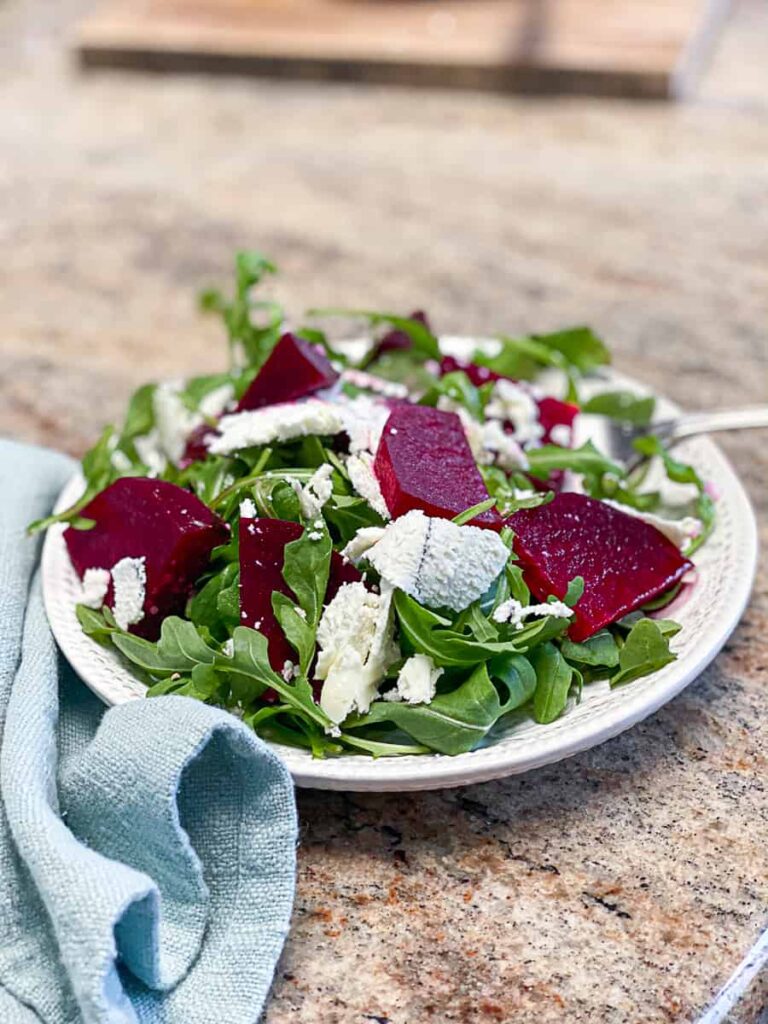
16) Sous Vide Beet Salad with Goat Cheese
Sous vide beet salad with goat cheese is a delightful blend of sweet and tangy flavors. You’ll love how the sous vide method enhances the natural sweetness of the beets while maintaining their nutrients.
Start by setting your sous vide machine to 185°F. Cook the beets for around three hours. This allows them to become tender while retaining their vibrant color.
After cooking, peel and slice the beets. Arrange them on a plate with layers of creamy goat cheese. The combination of textures is sure to impress.
Dress the salad with a mix of balsamic vinegar, orange zest, thyme, and a hint of honey. This dressing complements the earthy sweetness of the beets and the tangy goat cheese.
For extra flair, add some chopped nuts or fresh herbs. These toppings add crunch and fresh flavors, making the salad even more enjoyable.
This salad is easy to make and perfect for showcasing the benefits of sous vide cooking in a healthy and flavor-packed dish.
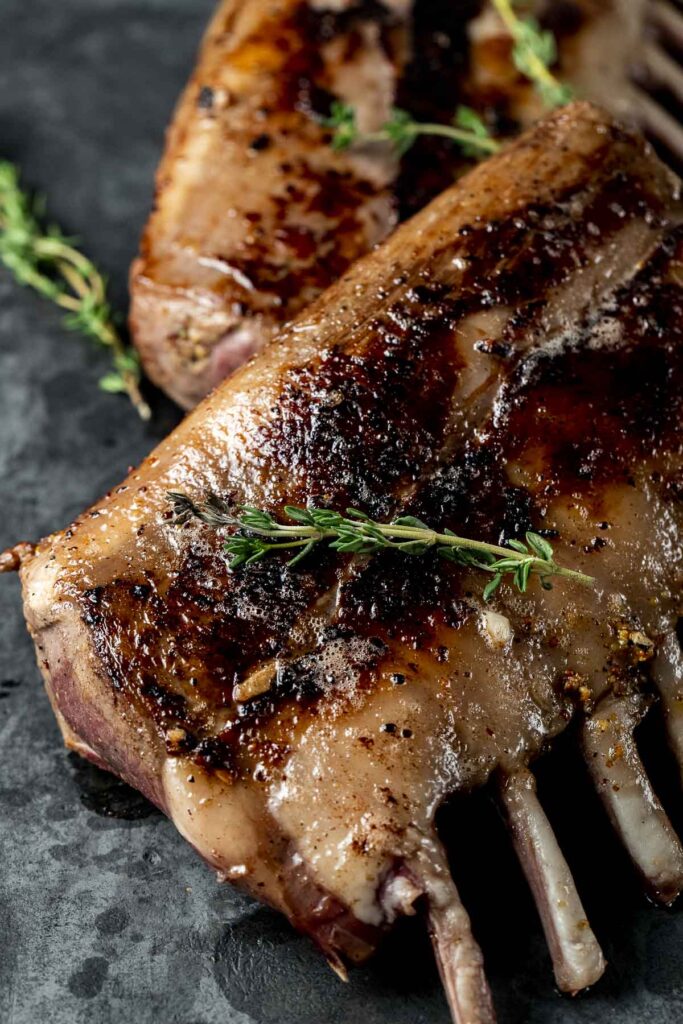
17) Sous Vide Rack of Lamb
Sous vide rack of lamb is a great way to get a perfectly tender and flavorful dish. Start by preheating your sous vide immersion circulator to the desired final temperature. Season the lamb racks generously with salt and pepper.
Put the seasoned lamb racks in individual sous vide bags with some herbs like rosemary and thyme, and a few cloves of garlic. Seal the bags and place them in the preheated water bath.
Cook the lamb for 3 1/2 to 4 hours at 125 degrees Fahrenheit. This temperature will give you a medium-rare result. After the sous vide cooking is done, carefully remove the lamb from the bags.
Preheat a cast iron skillet over high heat. Add a high smoke point oil, such as avocado or canola oil. Sear the lamb rack on the hot skillet for about 1 minute on each side.
For added flavor, toss a sprig of rosemary and some butter into the skillet while searing. Spoon the melted butter over the lamb to enhance its flavor. Once the lamb is nicely seared, remove it from the skillet and let it rest for a few minutes before slicing.
Enjoy your perfect sous vide rack of lamb, cooked to perfection with minimal effort.
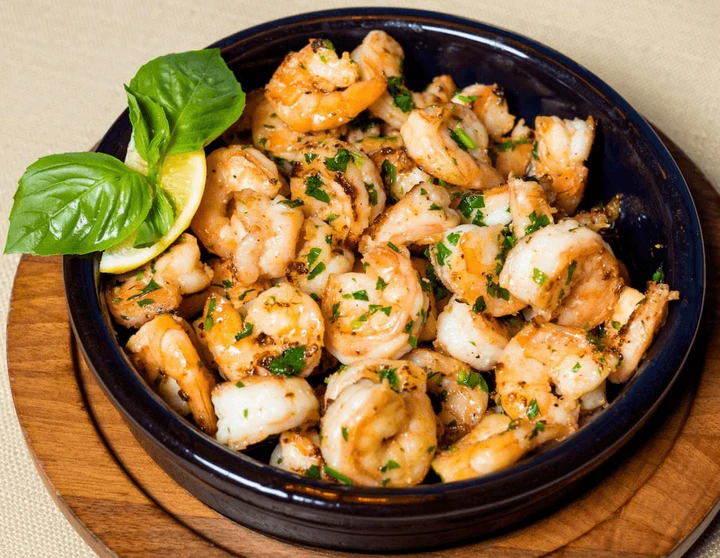
18) Sous Vide Shrimp Scampi
Sous vide shrimp scampi is both flavorful and easy to make. Start by setting your sous vide machine to 135°F (57°C). This temperature will make sure your shrimp is tender and juicy.
While the water heats up, mix butter, wine, lemon juice, salt, pepper, dehydrated onions, and minced garlic in a pan. Bring it to a simmer for about 5-7 minutes, then let it cool to room temperature.
Put your seasoned shrimp in a resealable bag. Use the “water displacement” technique to remove air and seal the bag. Place the bag in the water bath and cook for about 20 minutes.
Once the shrimp is done, you can quickly sauté it in a skillet with some of the cooled butter mixture. Toss to combine and let the flavors meld.
This sous vide method makes sure your shrimp is perfectly cooked and bursting with flavor every time. Serve immediately and enjoy your restaurant-quality shrimp scampi at home.
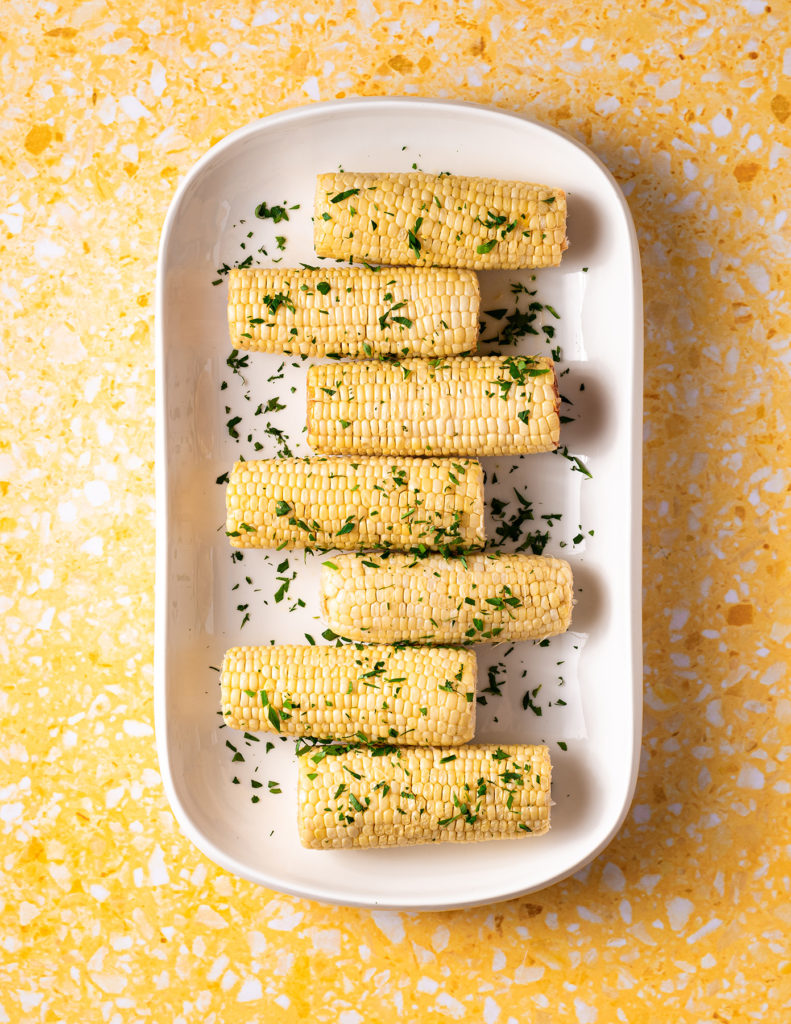
19) Sous Vide Corn on the Cob
Sous vide corn on the cob is simple to make and yields delicious results. Start by setting your sous vide machine to 183°F (84°C) and allow the water bath to preheat.
Husk the corn and remove all the silk. Place the corn in a resealable or vacuum seal bag. Add butter and salt to taste.
Seal the bag, ensuring there’s minimal air inside. If needed, use a vacuum sealer or the water displacement method.
Place the bag in the preheated water bath. Cook the corn for 30 minutes to achieve tender and flavorful kernels.
After cooking, carefully remove the corn from the bag. You can eat it straight away or quickly sear it on a grill for added flavor.
This method helps the corn retain its natural sweetness and juiciness. Enjoy your perfectly cooked corn on the cob!
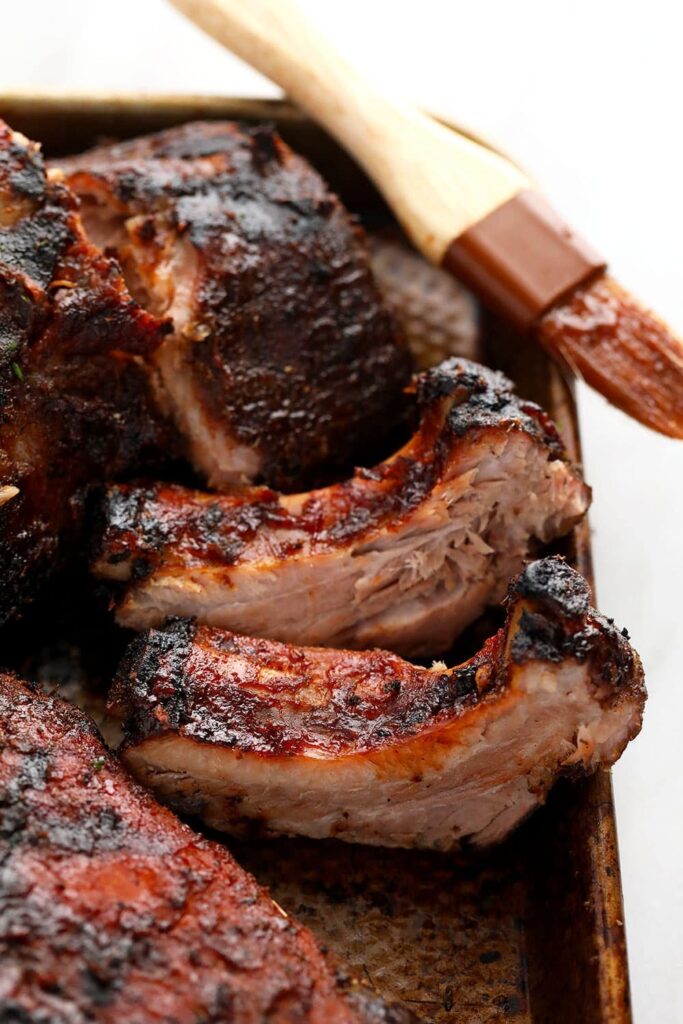
20) Sous Vide Barbecue Ribs
Sous vide barbecue ribs are juicy and flavorful. Start by setting your sous vide machine to 152°F. Season your ribs with salt, pepper, and any other spices you like. Place the ribs in a vacuum-sealed bag with some barbecue sauce.
After sealing, cook the ribs in the water bath for 24 hours. This long cooking time makes them tender.
Once they are done sous viding, preheat your grill. Move the ribs to the cooler side of the grill, meat-side up. Cover and cook until they are heated through and dry to the touch, about 15 minutes.
Brush the ribs with a layer of barbecue sauce. Move them to the hotter side of the grill. Cover and cook until the sauce is mostly dry, around 7 minutes. This step gives a nice caramelized finish.
If you prefer, you can use your oven. Preheat the oven to 450°F and set the rack about 6 inches from the heat source. Brush your ribs with more barbecue sauce and broil them until the sauce is bubbly, about 4 to 5 minutes.
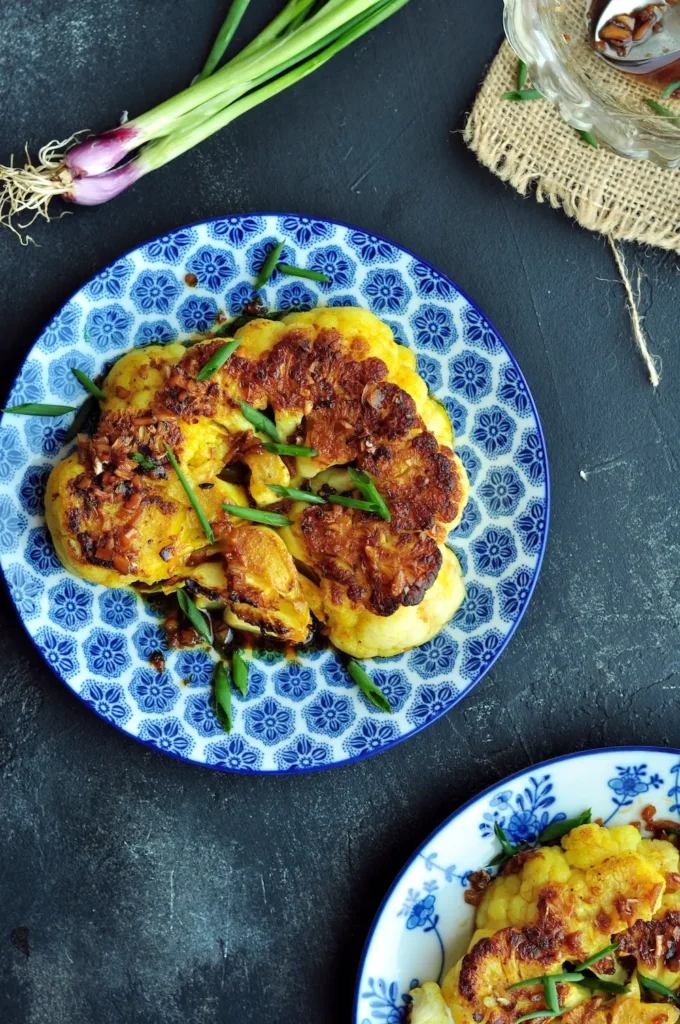
21) Sous Vide Cauliflower Steak
Sous vide cauliflower steak is a delicious and nutritious veggie dish. Start by setting up your sous vide machine to 185°F (85°C). Cut the cauliflower into thick slices or “steaks.” These should be about 1-1.5 inches thick.
Season the cauliflower steaks with your favorite spices. You can use garlic powder, paprika, salt, and pepper. Place the seasoned steaks into a vacuum-seal bag and seal it tightly. Cook the cauliflower steaks in the water bath for at least 1 hour, but up to 3 hours for deeper flavor.
Once cooking is done, remove the steaks from the bag and keep any juice inside. Heat a pan over medium-high heat with a bit of oil. Sear the cauliflower steaks for 1-2 minutes on each side until they are golden brown.
For an extra touch, you can make a sauce to drizzle over the steaks. A brown butter sauce with capers and lemon zest is a great choice. This adds a nutty and fresh flavor to complement the cauliflower.
Serve your sous vide cauliflower steaks as a main dish or a side. They pair well with grains, salads, and other vegetables. Enjoy the tender and flavorful results of sous vide cooking!
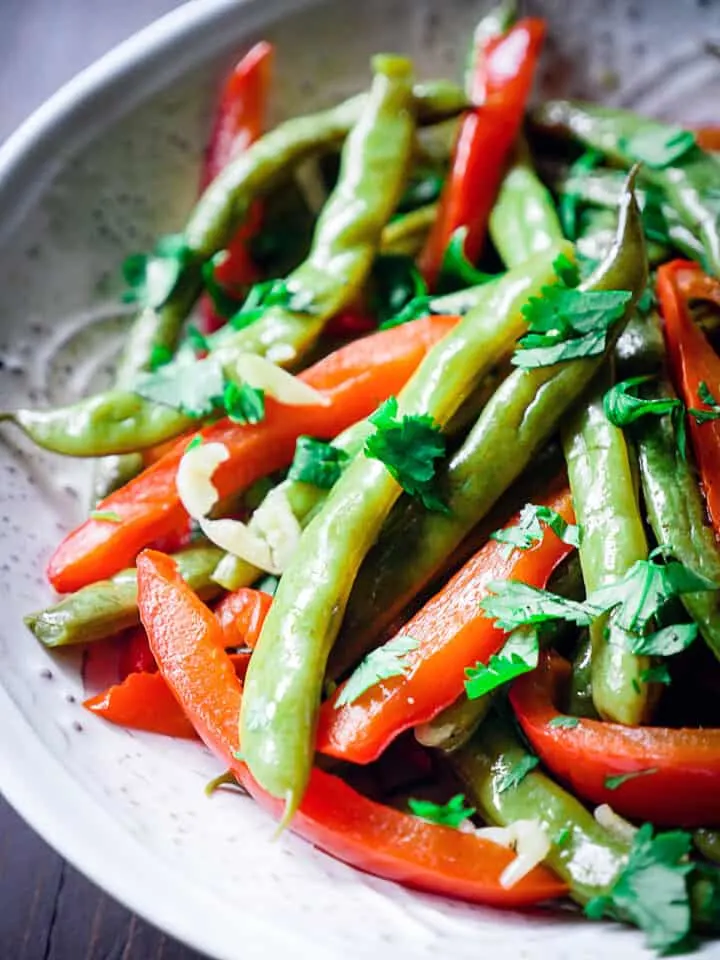
22) Sous Vide Green Beans
Sous vide green beans are a simple and delicious side dish. Start by washing and trimming the beans. Toss them in olive oil and season with salt and pepper.
Preheat your sous vide cooker to 186°F (86°C). Place the beans in a vacuum-sealed bag. Cook them in the water bath for 30-45 minutes for a crisp texture.
For a softer texture, extend the cook time to 60-90 minutes. Once done, you can sauté the beans with a bit of butter and garlic for extra flavor. Serve immediately and enjoy the perfectly cooked beans.
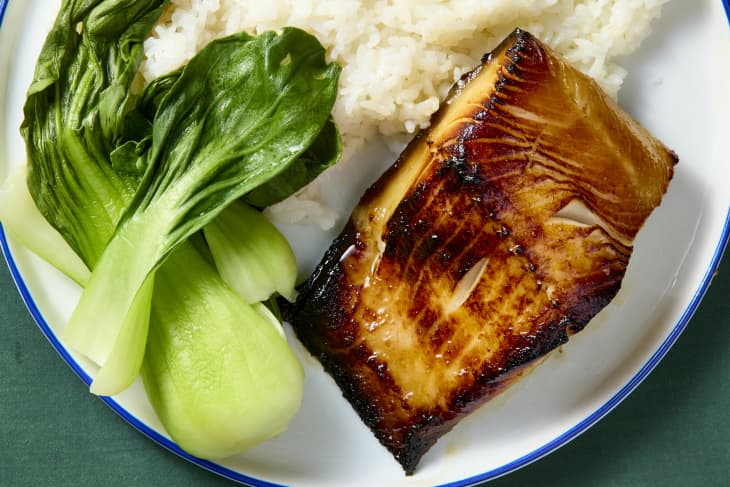
23) Sous Vide Black Cod with Miso
Black cod, also known as sablefish, is perfect for sous vide cooking. Its buttery texture blends well with miso for a delightful dish.
First, preheat your water bath to 140°F. While waiting, mix miso, sake, mirin, and sugar in a small saucepan. Heat until the mixture thickens slightly, around 5-8 minutes.
Cut the fish into serving pieces. Season each piece lightly with salt. Place them in freezer-grade Ziploc bags. Pour a bit of the miso mixture over the fish in each bag. Seal the bags using the water displacement method.
Cook the fish in the sous vide bath for about 30 minutes. After cooking, remove the fish from the bags. Heat a non-stick skillet over medium-high heat and add a little oil. Quickly sear each piece of fish for a nice, crispy exterior.
Garnish with sesame seeds and green onions. Your sous vide black cod with miso is now ready to serve.
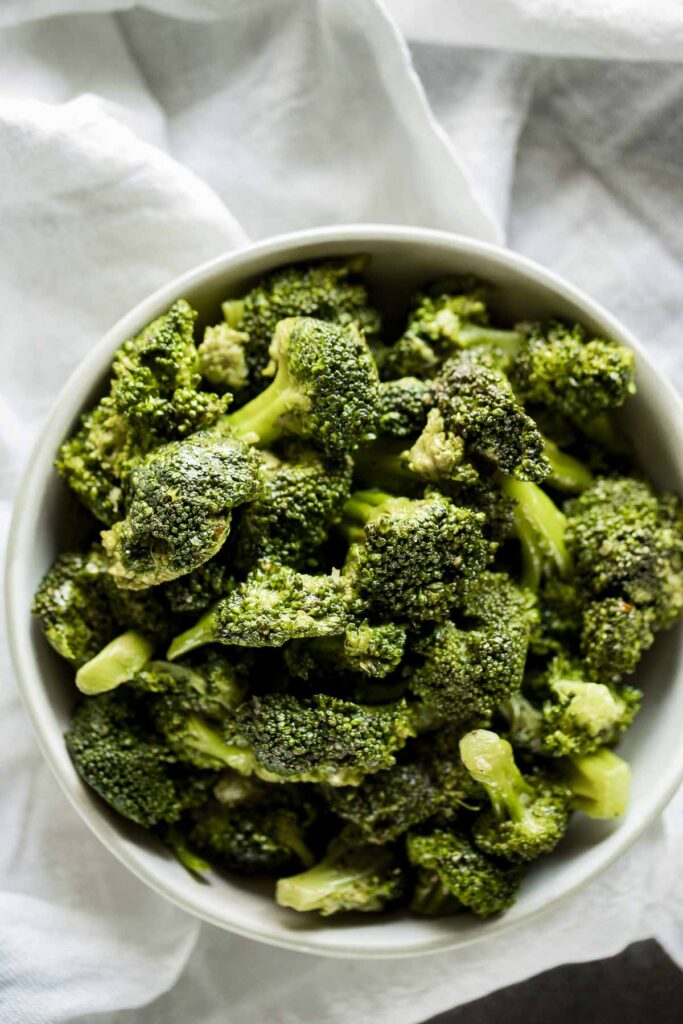
24) Sous Vide Broccoli with Garlic
Start by preheating your sous vide water bath to 185°F (85°C). This temperature ensures the broccoli becomes tender while retaining its bright green color.
Wash the broccoli thoroughly. Cut the broccoli crown into quarters. Peel the stem and slice it into 1/2 to 3/4-inch rounds.
Place the chopped broccoli into a vacuum seal bag. Add olive oil, minced garlic, salt, and pepper.
Seal the bag, removing as much air as possible. You can use a vacuum sealer or the water displacement method.
Submerge the sealed bag in the preheated water bath. Let it cook for 30 to 60 minutes.
Once done, remove the bag from the water bath. Carefully open the bag, as it will be hot.
Serve the broccoli directly from the bag or lightly toss it in a bowl before serving.
Enjoy your deliciously tender broccoli with a hint of garlic.
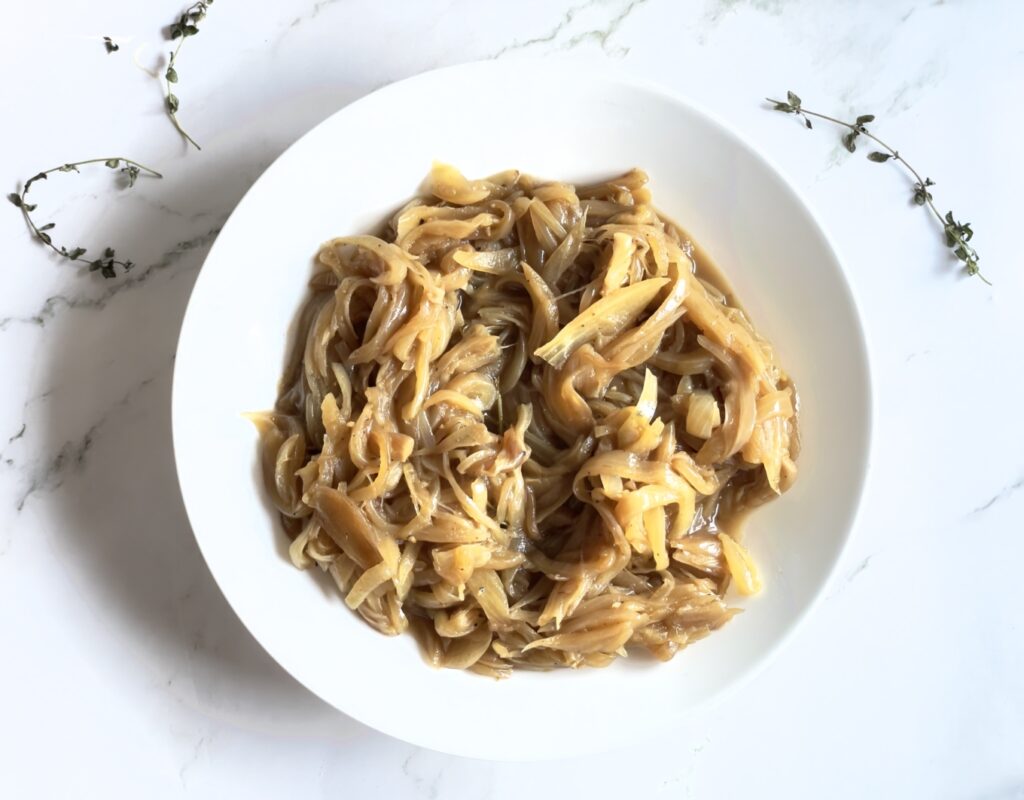
25) Sous Vide Caramelized Onions
Sous vide caramelized onions are a game-changer. You get rich, sweet onions without the hassle of constant stirring. Set your immersion circulator to 185°F and prepare a water bath.
Start by peeling and trimming the onions. Slice them into thin ¼-inch wedges. Heat a skillet over medium heat with a tablespoon each of butter and olive oil.
Cook the onions in the skillet for about 5-10 minutes until they are slightly soft. Transfer them to a sous vide bag, seal it, and submerge it in the water bath. Cook the onions for 18 hours.
This method allows you to achieve perfect caramelization. Your onions will be sweet and soft, perfect for burgers, steaks, or salads.
26) Sous Vide Chicken Thighs with Thyme
Start by setting your sous vide machine to 165°F. This temperature will ensure your chicken thighs are juicy and cooked through. Season both sides of the chicken thighs with salt and black pepper.
Place the thighs into a sous vide bag along with a few sprigs of thyme. If you don’t have a vacuum sealer, use the water displacement method to remove air from the bag.
Add the sealed bag to the preheated water bath. Let the chicken cook for about 90 minutes.
Once the time is up, take the thighs out of the bag and pat them dry with a paper towel. Heat a skillet over high heat and add a tablespoon of butter or oil.
Once the skillet is hot, sear the chicken thighs until the skin is crispy and golden brown. Serve the chicken with the thyme for an aromatic and tasty dish.
Benefits of Sous Vide Cooking
Sous vide cooking offers many advantages. It ensures enhanced flavor and texture, preserves nutrients, and delivers consistent results with precision.
Enhanced Flavor and Texture
Sous vide cooking locks in the flavor of your ingredients. Food is sealed in a vacuum bag, which keeps juices and aromas trapped.
The controlled, low-temperature environment ensures that meat, fish, and vegetables are cooked evenly. This method prevents overcooking and keeps proteins tender.
One great example is a sous vide steak. It cooks in its own juices, resulting in a flavorful, moist piece of meat.
Similarly, vegetables retain their natural sweetness and crunch.
Using this technique, you can achieve restaurant-quality dishes with little effort at home.
Nutritional Advantages
One of the major benefits of sous vide is that it requires less oil and fat. Cooking within a vacuum-sealed bag means you don’t need much additional fat.
The lower cooking temperatures preserve more vitamins and minerals compared to traditional methods. Foods like vegetables retain their nutrients because they are not exposed to high heat for extended periods.
Additionally, since you control the ingredients and seasonings, sous vide cooking is ideal for those following special diets like Keto, Paleo, or gluten-free regimes.
Enjoy healthier, nutrient-rich meals by minimizing nutrient loss during the cooking process.
Consistency and Precision
Sous vide delivers unmatched consistency. The precise temperature control means you get the same results every time you cook.
Whether you are preparing steak, chicken, or eggs, sous vide takes away the guesswork.
For instance, sous vide eggs can be cooked to your exact preference, whether soft or hard-boiled, without fail.
This consistency benefits both beginner cooks and professionals. You can prepare meals ahead of time, refrigerate them, and quickly reheat them in the water bath without compromising quality.
Reliable outcomes make sous vide a favorite choice for achieving professional-level cooking at home.
Equipment Essentials for Sous Vide
To cook sous vide, you’ll need some key tools. These include an immersion circulator, a vacuum sealer or alternative sealing method, and a container with a rack.
Choosing the Right Immersion Circulator
The immersion circulator is the heart of sous vide cooking. It heats and circulates the water to maintain a precise temperature. When choosing one, consider wattage, temperature range, and controls. Higher wattage models heat water faster. Look for a wide temperature range to cook various foods.
Digital controls and Wi-Fi connectivity can add convenience. Popular brands include Anova, Joule, and SOUSVIDE ART. Compare features like timers, app compatibility, and ease of use. Customer reviews can also provide insights into reliability and performance.
Vacuum Sealers and Alternative Methods
A vacuum sealer removes air from the bag to ensure even cooking and optimal results. Look for models with adjustable settings for different food types. Some sealers come with bags, but ensure they are compatible with the brand you choose.
Alternative Methods
- Water Displacement: Place food in a zip-lock bag, submerge it in water to push out air, and seal it.
- Reusable Bags: Eco-friendly and budget-friendly. Compatible with hand pumps for air removal.
Sous Vide Containers and Racks
A container holds the water and food during cooking. Any large, heat-resistant container will work, but containers designed for sous vide often come with lids to minimize evaporation.
Racks keep bags submerged and prevent them from floating, ensuring even cooking. Benefits:
- Organizes multiple bags.
- Prevents food from sticking together.
- Ensures better water circulation.
Tips
- Look for containers that fit your circulator.
- Consider adding insulation if cooking for long periods.
Basic Techniques and Tips
Mastering sous vide cooking requires understanding key techniques, such as controlling temperature and time, proper packaging and sealing, and the final steps of searing and presentation.
Temperature and Time Control
Your sous vide results depend heavily on temperature and cooking time. Each type of food has an optimal temperature and duration. For instance, steak usually cooks at 130°F for medium-rare over 1-2 hours. Chicken breasts reach their best at 146°F for about 1.5-4 hours.
Maintaining a consistent temperature is crucial. An immersion circulator helps keep water at a precise temperature, ensuring even cooking throughout. Since time and temperature are interlinked, follow a reliable guide to avoid overcooking or undercooking your food.
Packaging and Sealing Guide
Properly packaging and sealing your food is essential in sous vide cooking. Start by placing the food in a vacuum-seal bag or a ziplock bag. Ensure the bag is specifically designed for cooking to avoid any leaching of harmful chemicals.
When using a vacuum sealer, make sure the food is evenly distributed within the bag. If you’re using a ziplock bag, submerge the bag slowly in water to push out air before sealing it tight. This step, known as the water displacement method, helps the bag sink and ensures even cooking.
Finishing Touches: Searing and Presentation
After cooking sous vide, your food might look less appetizing. Searing enhances its appearance and adds flavor. Heat a pan until it’s extremely hot, then quickly sear your food on each side for a beautiful crust.
Be careful not to overcook during searing. One to two minutes per side is usually sufficient. For better presentation, slice your food against the grain, especially essential for meats. Garnish with herbs or spices for added appeal.
